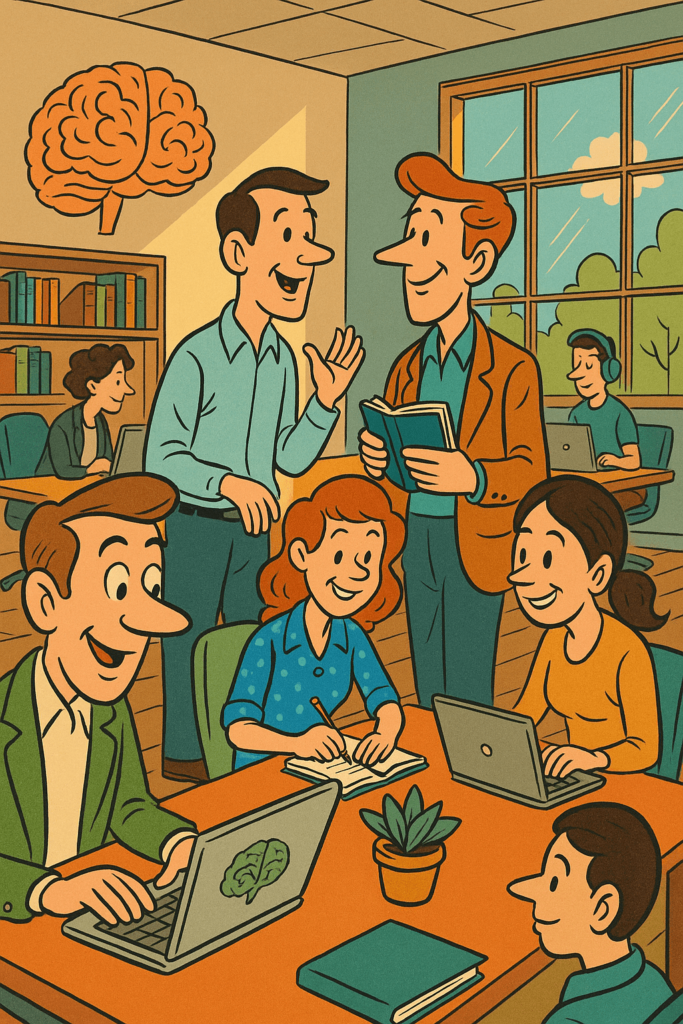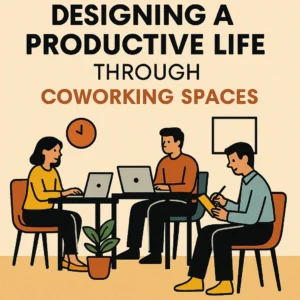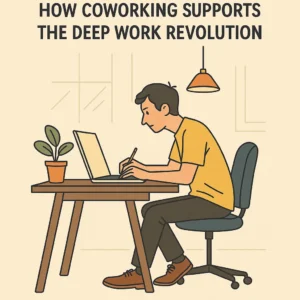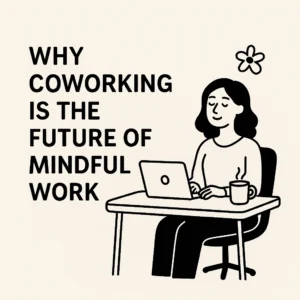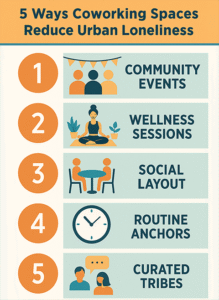Discover how neuroscience is shaping coworking design in Bangalore—boosting creativity, reducing stress, and enhancing productivity through brain-smart spaces.
In the modern age of work, where productivity meets mental well-being and creativity thrives on human connection, design is no longer about what looks good. It’s about what feels right—psychologically, cognitively, and emotionally. Nowhere is this more important than in the evolution of coworking spaces, especially in a vibrant, chaotic, and creative city like Bangalore.
Neuroscience—the study of the nervous system and the brain—is now being used to reimagine how we think about space. Not in the abstract sense, but in tangible, measurable ways. In coworking environments, every element—from lighting and acoustics to layout and textures—can influence our attention, emotions, collaboration, and ultimately our performance.
This article peels back the layers of design thinking and cognitive science, examining how coworking spaces in Bangalore are harnessing neuroscience to fuel creativity, reduce stress, build community, and enable high-performance living and working. Let’s dive into the unseen science of spaces—and explore how your brain reacts to the world around you, especially when that world is a beautifully curated coworking space.
The Rise of Neurological Design Thinking
Traditional offices were designed with efficiency in mind—linear cubicles, fluorescent lighting, and minimum aesthetic intervention. But neuroscience has shown us what designers long suspected: the brain doesn’t thrive in monotony.
Visual monotony dulls focus. Harsh lighting triggers anxiety. Confined layouts reduce social interaction and creativity. Conversely, enriched environments—those that offer choice, beauty, natural light, and a sense of belonging—activate the prefrontal cortex, the seat of problem-solving and innovation.
In Bangalore, as the demand for creative and flexible workspaces grows, Some coworking spaces are reimagining design as an interface with the human brain.
“Design is the silent ambassador of the human psyche. When you build for the brain, you unlock the soul of creativity.”
The Psychology of Space: What the Brain Really Wants
Humans evolved in nature, not inside concrete boxes. We crave stimulation, but not chaos. We want to feel safe, but not isolated. Great coworking design understands these paradoxes—and resolves them through thoughtful layout, colors, soundscapes, and more.
Let’s explore the elements of spatial neuroscience that matter most in coworking design:
Biophilia and Natural Light
The term “biophilia” refers to our innate tendency to seek connections with nature. It’s not aesthetic—it’s neurological. Studies show that exposure to natural light improves mood, sleep cycles, and even cognitive performance.
Many of the top coworking spaces in Bengaluru are now maximizing daylight through open layouts, skylights, and glass walls. Green walls, indoor plants, and natural materials like wood and stone stimulate the brain’s reward centers, making the environment feel safe and rewarding.
Color and Emotion
The brain associates color with emotional states. Cool tones like blue and green foster calm and focus. Warmer hues like yellow spark creativity and conversation. In coworking spaces that cater to freelancers and creative teams, balancing these tones becomes an art backed by science.
Freelancers often thrive in coworking spaces since intuitively a coworking space supports emotional regulation through visual cues.
Sound and Acoustics
Open office plans were meant to break down walls—but ended up amplifying distractions. Neuroscience tells us that even slight background noise can impair short-term memory and reduce performance on complex tasks.
Modern coworking spaces are using acoustic zoning—quiet zones, collaboration pods, and soundproof meeting rooms—to cater to different cognitive modes. These design choices are essential for people involved in deep work, like writers, coders, and strategists.
Spatial Layout and Choice Architecture
Freedom to choose—where to sit, when to move, how to work—is key to workplace autonomy. Neuroscience confirms that when people have control over their environment, their stress levels drop and motivation soars.
This is why some of the startup offices in Bangalore now resemble dynamic ecosystems more than static offices. They provide open lounges, focus nooks, brainstorming lounges, and even wellness zones.
Sensory Integration and the Brain at Work
Every space sends signals to the brain. Subtle, subconscious messages that say: “relax,” “focus,” “connect,” or “escape.” The best coworking spaces are those that weave sensory cues into their physical design.
- Smell: Subtle ambient scents like lavender or citrus can reduce stress and promote alertness.
- Touch: Textured materials—like soft fabrics, wooden desks, or stone surfaces—create tactile comfort.
- Movement: Sitting is the new smoking. Coworking spaces that integrate standing desks, movement zones, or even yoga corners improve brain oxygenation and mood.
At Work Theater, the coworking design incorporates multisensory cues to align the space with different working energies—from high-octane productivity to peaceful creativity.
Emotional Architecture: The Soul of a Space
Neuroscience doesn’t just deal with neurons—it also explains how environments make us feel.
Spaces that trigger awe or delight increase dopamine levels, which enhances creativity and motivation. Think art on the walls, unexpected design elements, or panoramic city views. Similarly, belongingness—a key human need—is fostered through communal zones, shared rituals, and warm aesthetics.
At Work Theater, these workspace insights have been translated into elements like:
- A screening room that doubles as a creative thinking arena.
- Play zones for decompressing.
- Artistic décor that inspires thought.
- A supportive community of creators in Bangalore that promotes human connection.
Cognitive Ergonomics: Making Work Effortless
Cognitive load—the total mental effort used in working memory—can be reduced by a well-designed environment. Ergonomic furniture, clear signage, visual hierarchy in interiors, and minimal clutter all contribute to smoother thinking.
This principle is especially critical for Bangalore coworking spaces that host multiple teams and solo workers across industries. A streamlined experience keeps the brain focused on the task, not the distractions.
From Workplace to Wellplace
The new coworking model is not just about where we work—it’s about how we feel when we work. Neuroscience supports the shift from workplaces to “wellplaces”—spaces that prioritize human well-being, joy, and longevity over cold efficiency.
For example, Work Theater blends wellness initiatives like meditation corners, creative retreats, and art workshops into its core offering. These aren’t add-ons—they are foundational to sustained creativity and output.
Want to understand how this works in practice? Explore why boutique coworking spaces are on the rise in Bangalore and how they offer a richer, more personalized experience.
The Bangalore Advantage
Bangalore is not just India’s startup capital—it’s the ideal ecosystem for cognitive-first design. The city’s demographic—young, creative, ambitious—is perfectly aligned with the neuroscience-driven evolution of coworking.
Add to this the climate, the thriving café culture, and the artistic sensibilities of its citizens—and you have fertile ground for coworking spaces that are both beautiful and brain-friendly.
Coworking pioneers like Work Theater are showing that unique coworking spaces aren’t just a trend—it’s a psychological imperative.
Why This Matters Now
As remote work and digital nomadism become mainstream, the role of physical space must evolve. We no longer need offices for access to computers and phones. We need them for meaning, flow, connection, and joy.
Neuroscience gives us the blueprint. Design gives us the execution. Together, they unlock the full potential of human performance in the modern workplace.
And that’s the heart of the story: A new kind of coworking space is emerging—not built around desks and Wi-Fi, but around brain chemistry and human connection. In Bangalore, it’s already happening.
Space Is a Silent Teacher
The environments we inhabit shape the people we become. This isn’t metaphor—it’s neuroscience.
Coworking design is not a luxury or an aesthetic choice. It is a fundamental enabler of psychological safety, creative expression, and deep work. Whether you’re a freelancer designing logos, a startup founder building a new product, or a writer crafting ideas, the space you choose will shape your journey.
Choose one that respects your brain.
Explore Work Theater, one of Bangalore’s most neuroscience-aligned coworking experiences—and discover what happens when design meets biology in the most human way possible.
If you need a workspace in Bangalore, remember:
You don’t have to work alone. You just have to work smarter.
Call us to reserve your coworking space at Work Theater
Explore our podcast
Learn more about our coworking space on our YouTube channel Work Theater Studios where we talk about a variety of topics including personal finance, entrepreneurship, business and life.
Fun fact! We also have a private theatre in Bangalore
